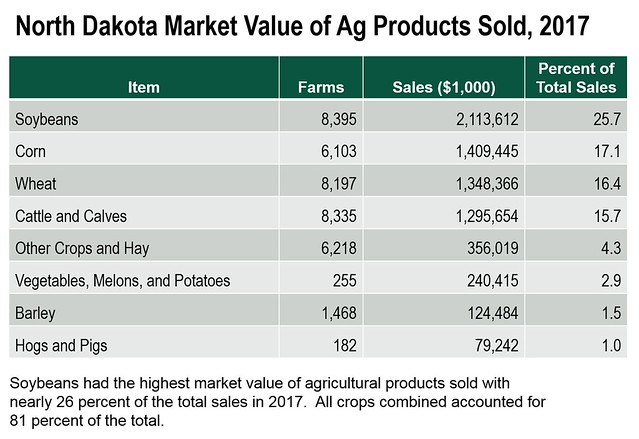
Even before Lewis and Clark explored the Northern Plains in 1804 and 1805, agriculture was very prevalent in the area that later became North Dakota – and it’s even more so today. The 2017 Census of Agriculture showed that farms and ranches occupy 39.3 million acres of land in North Dakota, which is an amazing 89 percent of the total land in the state.
North Dakota is a very diverse state in the number of commodities produced. In 2017, North Dakota led the nation in the production of all dry edible beans, navy beans, pinto beans, canola, flaxseed, honey, dry edible peas, Durum wheat, and spring wheat. North Dakota was the No.2 producer of lentils, black beans, great northern beans, all wheat, and sunflowers. As if that isn’t impressive enough, North Dakota was in the top five for the production of several other crops as well.
The Peace Garden State sold almost $8.2 billion worth of agricultural products in 2017, which is down 25 percent from 2012. Of these sales, $6.7 billion – or just over 81 percent of the total agricultural sales – came from crops. Soybeans had the largest amount of sales at $2.1 billion, which accounted for one-fourth of all agricultural sales. North Dakota is the main producer of flaxseed and canola in the United States; the 2017 census showed that 87 percent of the country’s flaxseed was grown in the state and 81 percent of the canola.
In the lush, nutrient rich soils of the Red River Valley, sugarbeets and potatoes are widely grown. In 2017, North Dakota was the third largest producer of sugarbeets in the country and the fourth largest producer of potatoes. Also, producers in the state are proud of the fact that North Dakota is the largest honey producing state in the nation. Approximately, 33.7 million pounds of honey was collected in North Dakota in 2017, or 23 percent of the total collected in the United States.
To learn more about North Dakota agriculture and its diverse commodities, please see the 2017 Census of Agriculture state-level data and the North Dakota State Profile (PDF, 920 KB)!


